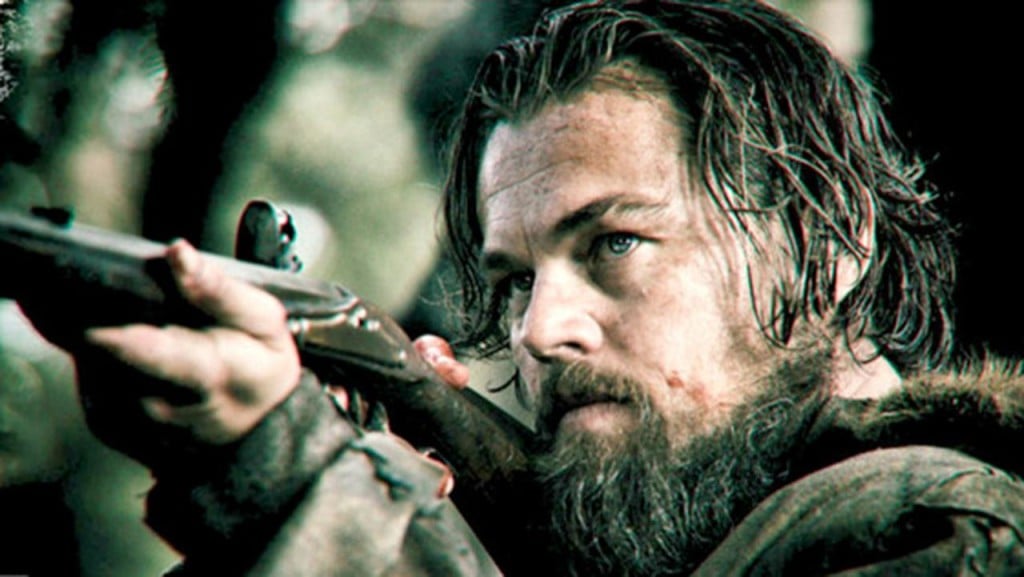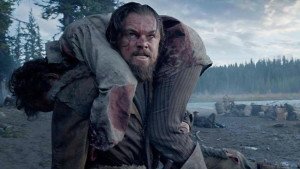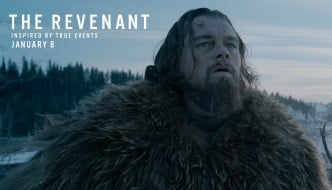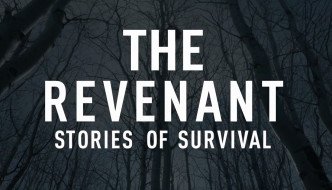Film review: The Revenant – ‘brutal with a glimpse of humanity’
January 16, 2016

Following on from the success of Birdman in 2015, Oscar winning director, Alejandro González Iñárritu’s latest release The Revenant, boldly impressed the Golden Globes committee this year, winning Best Director and Best Picture and is up for an astonishing twelve Oscar nominations. Starring, Leonardo DiCaprio, The Revenant, captures the brutal life of 19th century American pioneers in conflict with Native American tribes on unsettled land. DiCaprio plays the historical figure, Hugh Glass, an American frontiersman, whose story was made famous after surviving a bear attack and being abandoned by his men.
The film is a constant fight for survival; any moment of calm is repeatedly followed with gunfire and screams. Not only does Iñárritu capture the harshness of nature, but compares it to man as remorseless. “Nous sommes tous les sauvages”, states a sign on a man who has been hanged, every man here is depicted in his most savage state. Images of DiCaprio biting into raw meat, gutting a horse in order to shelter himself from a blizzard; something we have only read about in wartime, are graphically brought to life. Nothing is left to the imagination in this gut-wrenching drama.
DiCaprio’s rawness for acting, his sincerity, is clearly an Oscar worthy performance. He manages to convey the depth of human emotion without language as he travels alone to find revenge on Tom Hardy’s character John Fitzgerald, who has killed his son. Frustratingly, it is often hard to understand Hardy’s thick southern American accent, which takes away some of the film’s stature as it feels like we are missing vital parts of the film’s plot. Thankfully, the focus on DiCaprio and the awe-inspiring cinematography allows us to be utterly absorbed into this punishing world.
 Iñárritu removes the distinction between man and animal in the film, as both are as remorseless as the other. DiCaprio’s metamorphosis into a bear expresses this idea further as he hunts as stealthily as one, is clothed in fur and communicates his pain through grunts and heavy breathing. The film itself is a reflection of how challenging it was to shoot, as the actors and crewmembers were faced with the harshness of the film’s remote locations, as indeed, 97 per cent was filmed on location in Canada. The Revenant therefore expresses an authenticity of struggle; we are swept along this tide of suffering for the duration of the film, only given short moments to rest like the characters themselves.
Iñárritu removes the distinction between man and animal in the film, as both are as remorseless as the other. DiCaprio’s metamorphosis into a bear expresses this idea further as he hunts as stealthily as one, is clothed in fur and communicates his pain through grunts and heavy breathing. The film itself is a reflection of how challenging it was to shoot, as the actors and crewmembers were faced with the harshness of the film’s remote locations, as indeed, 97 per cent was filmed on location in Canada. The Revenant therefore expresses an authenticity of struggle; we are swept along this tide of suffering for the duration of the film, only given short moments to rest like the characters themselves.
After all the pitiless battles between the settlers and tribes, it is DiCaprio’s character who allows room for redemption, as his love for a Native American woman and their child together, creates an underlying sense of peace throughout the film. We hear her ethereal whispers of godlike wisdom, allowing a woman’s presence to enter into the setting of macho warfare.
The historical nature of the film, reminds us of just how violently men can behave towards men: turning on themselves, betraying one another. Yet The Revenant also captures the beauty of a father’s love that has no boundaries. Despite the brutality of man, we see how perhaps it is the inexhaustible nature of love that fuels our survival instinct.
Reviewed by Olivia Neilson at the Hyde Park Picture House, Leeds, where it runs until 21st January 2016.
Filed under: Film, TV & Tech
Tagged with: The Revenant


Comments